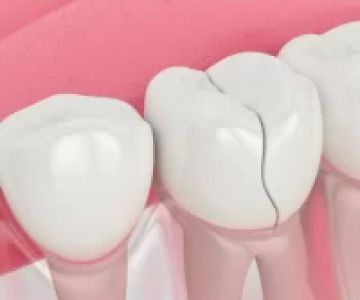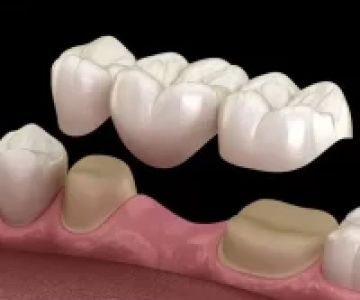What Are the Symptoms of Gum Disease? Understanding the Early Signs
- Introduction to Gum Disease
- Common Symptoms of Gum Disease
- Stages of Gum Disease and Their Symptoms
- How to Diagnose Gum Disease
- Treatment Options for Gum Disease
- How to Prevent Gum Disease
Introduction to Gum Disease
Gum disease, also known as periodontal disease, is a common condition that affects the gums and the structures supporting the teeth. It begins with gingivitis, which is a mild form of gum disease that causes irritation and swelling of the gums. If left untreated, gingivitis can progress to more severe forms of gum disease, including periodontitis, which can result in tooth loss. Understanding the symptoms of gum disease is crucial for early detection and effective treatment. In this article, we’ll explore the common signs of gum disease and how you can protect your oral health.
Common Symptoms of Gum Disease
Gum disease often progresses silently, and many people may not experience any noticeable symptoms in the early stages. However, when symptoms do appear, they can range from mild to severe. Some common signs that you might have gum disease include:
1. Swollen or Bleeding Gums
The most noticeable symptom of gum disease is swollen, red, or bleeding gums. You may notice your gums bleed when brushing or flossing your teeth. This is usually a sign of gingivitis, the early stage of gum disease.
2. Persistent Bad Breath
Bad breath, also known as halitosis, can be another sign of gum disease. This occurs due to the buildup of bacteria in the mouth, which can cause an unpleasant odor. If bad breath persists even after brushing, it may be an indication of gum infection.
3. Gum Recession
Gum recession occurs when the gums begin to pull away from the teeth, making them appear longer. This can result in tooth sensitivity and expose the tooth roots to harmful bacteria.
4. Loose Teeth
As gum disease progresses, the teeth may become loose or shift positions. This is a sign of more advanced gum disease, such as periodontitis, which can damage the bones and tissues that support the teeth.
5. Painful Chewing
If chewing becomes painful, it may be a sign of gum disease. The infection can cause the teeth to become sensitive, and chewing can aggravate the discomfort.
Stages of Gum Disease and Their Symptoms
Gum disease progresses through different stages, each with its own set of symptoms. The earlier the stage, the easier it is to treat. Here’s a breakdown of the stages and their symptoms:
1. Gingivitis
Gingivitis is the earliest stage of gum disease and is usually characterized by swollen and bleeding gums. At this stage, there is no permanent damage to the gums or bone. Gingivitis can often be reversed with good oral hygiene and regular dental visits.
2. Periodontitis
If gingivitis is not treated, it can progress to periodontitis, which is a more severe form of gum disease. At this stage, the gums start to pull away from the teeth, pockets form between the teeth and gums, and the supporting bone may begin to break down. Treatment becomes more intensive at this stage and may involve scaling and root planing.
3. Advanced Periodontitis
Advanced periodontitis is the final stage of gum disease. It can lead to significant tooth loss due to severe damage to the bone and gum tissue. At this stage, the teeth may become loose, and surgery may be necessary to restore oral health.
How to Diagnose Gum Disease
If you notice any of the symptoms mentioned above, it’s important to seek professional dental care. A dentist will perform a thorough examination of your gums, looking for signs of swelling, bleeding, and gum recession. They may also use a small probe to measure the depth of the pockets between your teeth and gums, which can help diagnose the stage of the disease. X-rays may be taken to assess any bone loss around the teeth.
Treatment Options for Gum Disease
Once gum disease is diagnosed, there are several treatment options available depending on the severity of the condition:
1. Professional Cleanings
For early-stage gum disease, professional cleanings by a dentist or dental hygienist can remove plaque and tartar buildup. Regular cleanings can prevent the condition from progressing.
2. Scaling and Root Planing
For more advanced stages of gum disease, scaling and root planing may be necessary. This deep cleaning procedure removes tartar and bacteria from below the gumline and smooths the tooth roots to encourage healing.
3. Surgery
In severe cases, surgical procedures such as flap surgery or bone grafts may be needed to restore damaged tissues and bone. These procedures are typically performed by periodontists, specialists in gum disease treatment.
How to Prevent Gum Disease
Preventing gum disease is much easier than treating it. Here are some effective ways to keep your gums healthy and avoid gum disease:
1. Brush and Floss Regularly
Brushing your teeth twice a day with fluoride toothpaste and flossing once a day are the most important habits for preventing gum disease. Make sure to brush your gums gently as well as your teeth.
2. Use Antibacterial Mouthwash
Rinsing with an antibacterial mouthwash can help reduce bacteria in your mouth and prevent plaque buildup, which can lead to gum disease.
3. Avoid Smoking
Smoking is a major risk factor for gum disease, so quitting smoking is one of the best things you can do to protect your gums and overall oral health.
4. Visit Your Dentist Regularly
Regular dental check-ups and cleanings are essential for preventing gum disease. Your dentist can catch any early signs of gum problems before they become serious.
Final Thoughts on Gum Disease Prevention
Gum disease is a serious condition that can affect your oral health and overall well-being. By recognizing the symptoms early and practicing good oral hygiene, you can prevent or stop the progression of gum disease. If you’re looking for expert oral care products to help maintain healthy gums, visit Dentistry Toothtruth for recommended products that support gum health.







 Restorative and Implant Dentistry of Long Island5.0 (6 review)
Restorative and Implant Dentistry of Long Island5.0 (6 review) All Family Dental and Braces4.0 (287 review)
All Family Dental and Braces4.0 (287 review) Red Oak Dentistry: Dr. Michael King4.0 (74 review)
Red Oak Dentistry: Dr. Michael King4.0 (74 review) Long Grove Dental5.0 (1022 review)
Long Grove Dental5.0 (1022 review) Dental Arts of Totowa4.0 (80 review)
Dental Arts of Totowa4.0 (80 review) Dr. Steven Pittman5.0 (1 review)
Dr. Steven Pittman5.0 (1 review) The Importance of Oral Health Education During Pregnancy for a Healthy Pregnancy
The Importance of Oral Health Education During Pregnancy for a Healthy Pregnancy Best Tips for Brushing Your Teeth Properly for Healthy Gums: Essential Techniques for Oral Health
Best Tips for Brushing Your Teeth Properly for Healthy Gums: Essential Techniques for Oral Health Why Skipping Dental Checkups Can Lead to Bigger Oral Health Problems
Why Skipping Dental Checkups Can Lead to Bigger Oral Health Problems Advantages of Porcelain Dental Restorations
Advantages of Porcelain Dental Restorations How Can Diabetes Cause Tooth and Gum Problems? Preventing and Managing Oral Health Issues
How Can Diabetes Cause Tooth and Gum Problems? Preventing and Managing Oral Health Issues Healthy Habits for Promoting Good Oral Health and Hygiene: Tips for a Healthy Smile
Healthy Habits for Promoting Good Oral Health and Hygiene: Tips for a Healthy Smile